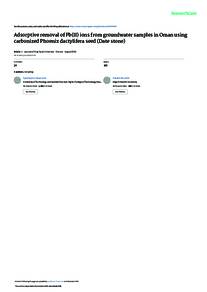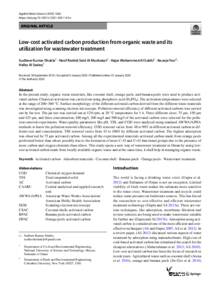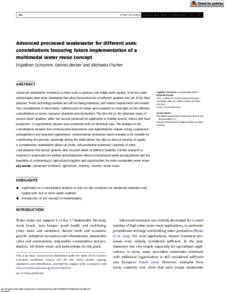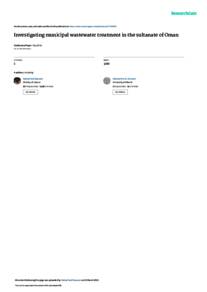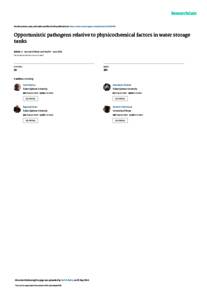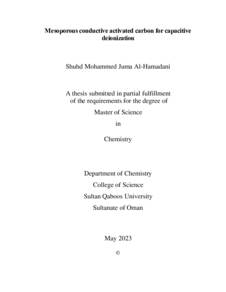Document
Adsorptive removal of Pb(II) ions from groundwater samples in Oman using carbonized phoenix dactylifera seed (date stone).
Identifier
DOI: 10.1016/j.jksus.2020.07.015
Source
Journal of King Saud University - Science. v. 32, 7, p. 2931-2938
Contributors
Al-Balushiyah, Muzna., Author
Al-Siyabiyah, Fatima., Author
Al-Hinaiyah, Nouf., Author
Khurshid, Shadab., Author
Country
Netherlands.
City
Amsterdam
Publisher
Elsevier B.V.
Gregorian
2020-10-01
Language
English
Subject
Subject (Name)
English abstract
Objective: In the present work, the potential use of raw date stone as an inexpensive carbonized adsorbent material for removal of Pb(II) has been demonstrated. Methods: The adsorption of Pb(II) ions onto carbonized date stone has been studied by batch adsorption method. The variables (pH, adsorbent dose and initial concentration of Pb(II) ions) of the adsorption process were optimized by response surface methodology via Box-Behnken design (BBD). Results: The optimum values of pH, adsorbent dose and initial concentration were 5.0, 0.3 g and 5.0 mg L−1, respectively to achieve 88.50% removal efficiency. The adsorption data fitted well to both Langmuir and Freundlich isotherm models with coefficient of correlation (r) ˃0.9999. The maximum adsorption capacity of the described adsorbent material for Pb2+ ions with Langmuir model was found to be 9.03 mg g−1. Kinetic data obtained at different concentrations have been analysed using pseudo-first-order and pseudo-second-order kinetic models. The experimental data obeyed pseudo-second-order kinetic model. Gibb's free energy change (ΔG°) was evaluated and resulted with −17.91 kJ mol−1 at 298 K, hence indicated favourable adsorption process. Conclusion: Neghal carbonized date stone was found to be a promising natural adsorbent for removal of Pb(II).
ISSN
1018-3647
Category
Journal articles

